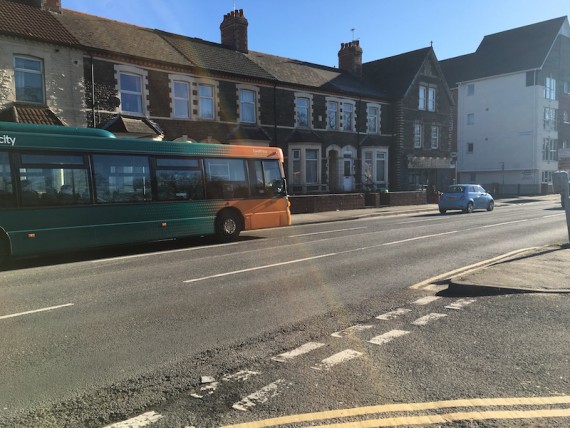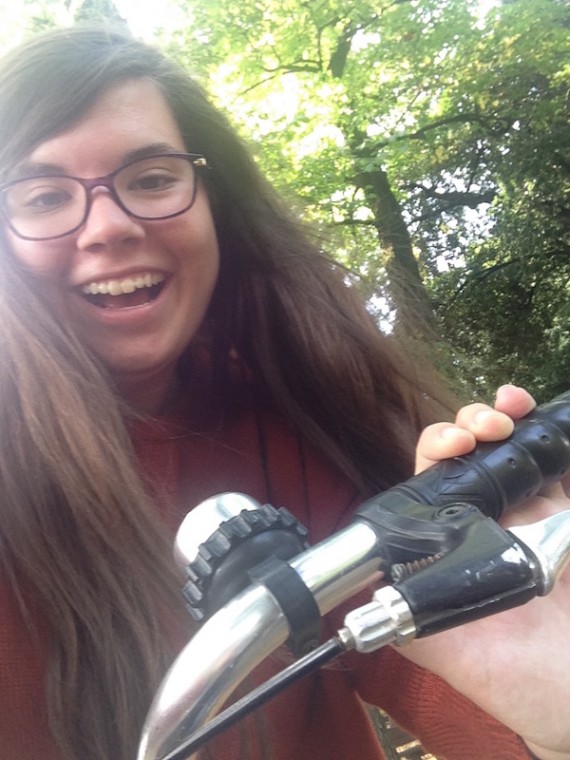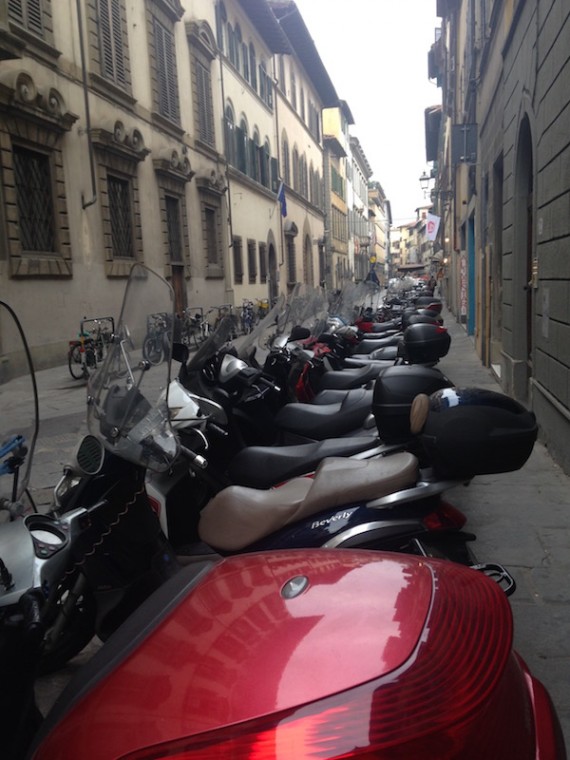
Week 4 Prompt: Public Transit
Outside dense, urban cores — New York, Chicago, San Francisco — most American cities require cars to get around. The reason is rooted in ideology as much as history. Especially during the post-WWII period, automobiles emerged both as a convenient mode of transportation and as an expression of individuality: you could travel on your own schedule, at your own pace, in a car of your choice, with your belongings concealed safely in the trunk. Indeed, while the American love affair with cars has spread, many small- and medium-sized cities outside North America offer cheap, reliable, and safe public transit. Though British trains are famously (though perhaps not actually) late, in places like Japan and Germany, train operators are penalized for running even a few seconds behind. Public transit — whether train, bus, or street trolly — has clear advantages over the car: not only is the carbon footprint lower, they allow riders to make better use of their time in-transit, perhaps by reading, knitting, or visiting with friends. But it also has drawbacks: you must carry everything yourself, and transit schedules aren’t always the most convenient. This week, pay attention to public transit. Is there a reliable system where you live? Is it utilized by the people who live nearby? What modes of transit are offered? Street-level trolleys? Subways? Busses? Gondolas? Ferries? Take a picture of the public transit system: a bus, a trolly, or the like. If there isn’t one, take a picture that best illustrates how people get around.
Ryan Hildebrandt
Public transportation is the easiest, cheapest, most efficient, and greenest way to get around in Japan. Trains and busses connect every part of every major and minor city, and even connect the cities to one another. The trains run frequently and on time, and take you farther than anything else for less money. They’ll take you clear across the city in a matter of minutes and even up to the mountains to get away from it all.

Zachary Weaver
We are on a tour of the transportation systems of the world: first trains, then planes, and now public transport! While perhaps trains are first thought of when one thinks of public transport in the United Kingdom, it is really the bus that is the workhorse of the average worker. Trains are great for getting from the outskirts of a big city to the center, or from city to city. However, one of the most efficient ways to get around within a city is by bus.
Busses in the UK are famous, if only for the iconic red double-decker busses found in London. Sure enough, those are no fantasy image: I was in London just the other weekend, and there seemed to be almost as many busses as there were cars! With purposes ranging from designated bus tours of the city to actually transporting people around the various parts of London, the bus system seemed more prevalent than the London Underground.
It is no different in Cardiff, other than the shape of the bus. Not a day goes by when I don’t see at least 3 busses, either going from the outskirts to city center or ferrying students around campus (which is much bigger than Colgate it must be said!). These aren’t Colgate Cruiser style people movers – these are full busses, more reminiscent of Centro busses for those from Central New York. On my walk to classes I pass between 2 and 5 bus stops every day – they are almost on every street corner or intersection. Designated bus lanes are prevalent even in cities such as Cardiff.

One of the many busses I pass on my way to classes everyday. This particular bus runs from the suburbs to the city center pretty consistently!
Busses can also fill the role of trains and planes. Often, it is cheaper to buy a bus ticket to a major hub than a train or plane ticket if one is traveling around the UK. I took a bus to London the other week, and it was a fairly short three and a half hour bus ride through the countryside. Busses also run as far north as Scotland – several people have already planned a bus trip from Cardiff to London, then an overnight bus up to Glasgow or Edinburgh!
Busses are also a fairly cheap method to get around, even over short distances. A bus ride from the Cardiff City Center out to the suburb of Tongwynlais (where another castle – Castle Coch – can be found), and back cast about $6 USD, for a ride lasting about half an hour one-way. We saw numerous people who had come into the city center for shopping leave the bus at their various stops with shopping bags, and use a special prepaid bus pass to get on and off. Should we have to do any more bus travel, getting a bus pass may not be the worst idea!
Mallory Keller
Florence is a small city, with the population just under 400,000 people. While that may seem like a lot of people, the population is much more condensed than American cities. Bus is the only form of public transit in Florence. One of the reasons why Florence does not have a more common system like a subway is that the city is still laid out in medieval fashion so it would be difficult to build a system that follows the layout of the city without destroying historical monuments which are literally on every block. Buses are not even allowed on many streets because they do not fit down them or to preserve the streets. I only rode public transit a handful of times during the semester and I walked everywhere else. Most days I ended up walking around 10 miles. First, everyplace I wanted to go was within a thirty minute walk of where I was at a current moment and walking everywhere is common for Florentine people. To take the public transit in Florence, it would end up taking as much or more time than walking. So I decided to walk almost everywhere. I was getting great exercise and saw so much of the city. It was also known in the city that the transit system is not that reliable. The buses could be on strike, buses will not show up when they are supposed to, they will pass you if you do not flag/wave/jump up and down like a crazy person, and schedules would change on random days. Many Italians rode bikes or scooters around the city. They can swerve around city traffic, are better for the environment, and are much easier to park than a car. Overall, Florence prides themselves as a walking city, and I am glad that walking is the main mode of transportation because I was able to see more of the city than if I was riding a bus all day.

Mallory attempting to take a selfie while on a bike.

The row of scooters that are on every street.
Allison Zengilowski
Growing up in a rural town in Vermont, public transportation was effectively non-existent. Transitioning to Hamilton, New York, the Cruiser was a big step up, yet diminutive in comparison to the public transit that exists in larger cities. Wollongong has several series of busses that run throughout the city, into some of the more suburban areas, and to the University. What is incredibly convenient is that there are free shuttles that run on a loop between the university and town, making getting around both easy and inexpensive.
There are also trains that run along the coast. Sydney is a rather painless 1.5-2 hour train ride from Wollongong, typically only costing about five dollars each way. Both the trains and busses are utilized by a great deal of students, patrons, and professionals. There are a decent amount of students who bring their cars to university, for if they are from the more rural areas and are interested in going home, public transport may not be a feasible option. However, for getting around within Wollongong and for traveling relatively far outside of it, busses and trains are a convenient option.

